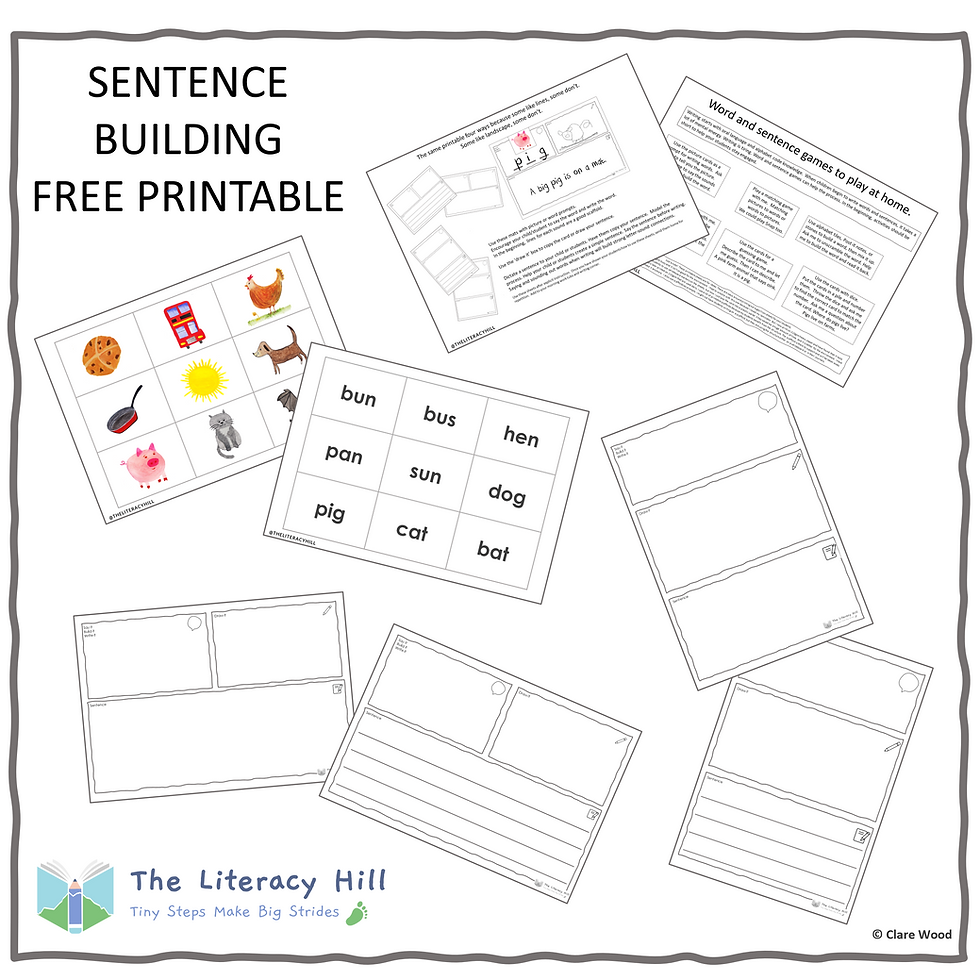WORD BUILDING MAN
- Developers Devzmelbourne

- Sep 5, 2022
- 3 min read

We are halfway through the first term here in Western Australia. The beautiful preprimary students I know have worked their way through the first six sounds and are steadily moving on as they build their skills and content knowledge. Word building is a fantastic activity to showcase how the alphabet code works, and the act of manipulating sounds to create words quickly builds the sound-symbol correspondence in the context of real words.
There’s a lot to learn in the first year of school, so we have to be mindful that we present information in tiny chunks that are repeated often so as many children as possible are caught in our literacy net. Many children need information on rinse and repeat. Capturing their attention with engaging activities is a recipe for increased motivation. We paired this activity with The Gingerbread Man story. My fantastic friend also created a rhyme that she told her class as they did this activity. I am going to use it next time!
Run, run as fast as you can, you can’t catch me, I’m the word building man.
I always leave several stories with my students. The Gingerbread man was the — we can read it together story, and Phonic books readers are the — I can read it by myself story.
Word building is one of those activities that covers so many skills and content knowledge. AND it’s fun! I have never had a child not like word building.
Go here to read about first steps in Word building.
Go here to read more about word building.
Go here to read about the skills needed for fluent reading.
I do word building sessions with all my students. In the beginning, word building is about connecting speech sounds to the alphabet. But word building doesn’t stop once students know the initial sounds A-Z. My older students build words that have the same sound but different spelling, or it might be word families and we discuss a spelling pattern, or we might even focus on a root word. The act of pulling words apart and putting them back together builds the skills required for fluent reading.
The next set of letters in the sequence are M D G O C K. These letters go together with the letters S A T P I N and this brings in new words to build, pull apart and read. This might not be your sequence and that’s OK. The printable will work for you too, as there is a blank copy available for you to add in the letters of your choosing.
Be consistent and stick to a sequence.
if you don’t have a sequence check out this post about the sequence I use. If you want to look at a range of sequences for some other programs. The word building man printable is perfect for repeated practice, literacy centres after explicit instruction or for home practice and he goes so well with gingerbread men for an afternoon snack.
Here is what we did
We started with the word man. Word building reviews past learning and builds skills in a playful way. We have to be all about eyes on print and word building is a playful way to drill this — reading is all about the words and this short activity is all about the skills of blending the sounds to read the word and segmenting to spell.
We built several words and read each word back.
We discussed the words and added the words to sentences after reading the words.
After building words, we used some paper men words instead of our usual whiteboard for writing. Writing can be hard for little ones. It is a laborious task, so changing the surface can make it a fun activity as we had to add words to their shirts!

The man is also a good word to think about irregular plurals. So we discussed it with the gingerbread men. We have one gingerbread man but what about these two over here — what do we call these? Most children get this vocabulary through everyday conversation but it is good to help them connect the dots as many children do overgeneralise and then we hear ‘mans’ and ‘brang’ and ‘catched’. This little guy knew it was men so we just had to create more little men to add the word.

The free printable comes with a letter to send home to parents. The more we can involve parents the more repeated practice can happen, which benefits all children.







Comments